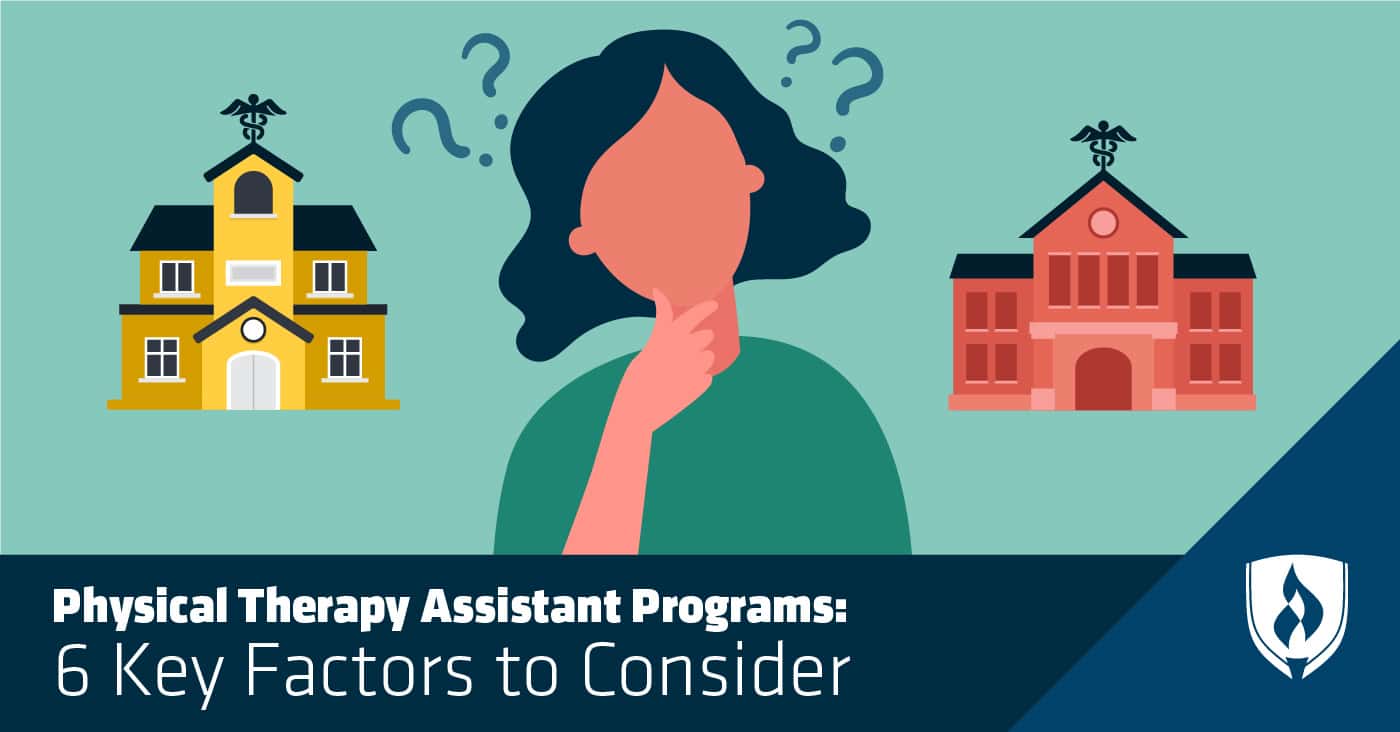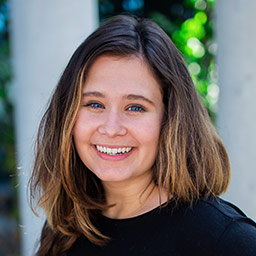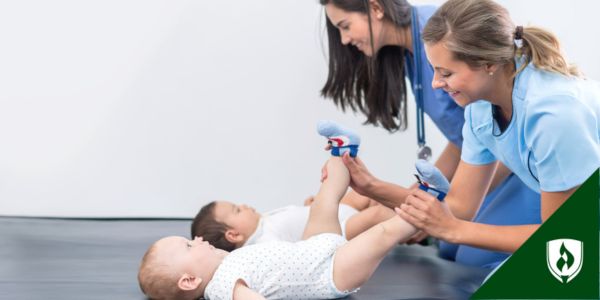
It’s easy to see why you’re drawn to the field of physical therapy. You’ve known for a while that you want a job where you can make a difference in a tangible way. Plus, you like the idea of being active at work, and don’t want to spend your days more-or-less attached to a desk. Working as a physical therapist assistant (PTA) would allow you to stay active and make a difference as you help patients learn to move with less pain.
You want a program that will equip you with the skills and training needed to excel in this role while still striking a balance between your needs and the coursework you’ll take on. You have some options—so how do you know which program is the right one for you?
To help you in your search, we researched and interviewed working PTAs as well as Amy Garrigues, DPT and Executive Director at the Rasmussen University School of School of Health Sciences, to learn more about the common factors students will need to consider when evaluating PTA programs.
6 Things to consider when evaluating PTA program options
In your quest to find a quality physical therapy assistant program, there are a few important elements you should be looking for. Start by asking yourself these questions - the answers could lead you to your perfect educational fit.
1. What will I need to do to gain admission?
Gaining admission into a PTA program is the obvious first step. While it may seem simple at first glance, there can be quite a bit that goes into securing a position in a PTA program. Complicating matters is the fact that entry requirements are not universal from school to school. Admittance into a PTA program can require some substantial work—job shadowing time, PTA-related volunteer hours, completion of course perquisites, and minimum GPA requirements for general education courses are all fairly common potential requirements. Additionally, programs may have wait lists for otherwise qualified candidates.
Depending on your background, goals and the institution you’re applying to, fulfilling these requirements can range from attainable to potentially frustrating. Take some time to shop around and learn more about the requirements for each program. It may be helpful to keep track of admissions requirements for all the programs you’re considering on a spreadsheet for easy comparisons.
2. What are my scheduling options?
Chances are strong you’ll have other commitments when attending PTA school—family, work and hobbies can all be complicating factors. These parts of your life are important to you, so you’ll want to consider what, if any, scheduling flexibility a program may have. Does the program include any online courses? How often will you need to be in the classroom or lab to complete your training?
One of the easiest ways to create a more malleable schedule is through online courses. At Rasmussen University, PTA students take the non-lab portions of their coursework online. This format includes weekly readings, discussion posts, writing assignments and live classroom sessions with an instructor.
While there are scheduled elements in the online portion, students have additional control over much of the timing and their location. Online, students can learn from anywhere—while taking a lunch break at work, during early morning study session at a coffee shop, or late at night at their kitchen table. “Online coursework allows flexibility for students to study course content when it works best for them,” says Garrigues.
3. What experience does the faculty have?
There’s no question that professors and instructors play a massive role in a students’ education. You want to know that you’re learning from instructors who have experience in the field and know how to coach you through challenging subjects.
When researching programs online, look into the faculty and their qualifications. Ideally you’ll find instructors and leadership with a mixture of DPT (Doctor of Physical Therapy) and physical therapist assistant experience, both of which can provide valuable clinical experience and perspective.
Katie O’Neal, PTA at NovaCare Rehabilitation, says she really valued the experience that the practicing PTA instructors brought to her training. By sharing the problems and solutions they encountered in their practice, they made classroom learning even more practical. “I still think of their stories on occasion five years later,” O’Neal says.
These relationships can be valuable—and while you don’t need to be best friends with your instructors it can help to get a feel for the personalities you’ll be spending a considerable amount of time with. If possible, see if you can visit campus and meet some of the instructors. Some programs may allow you to sit in on a class or lab when you visit, which will give you a great sense of the instructors’ teaching styles.
4. What can I expect from the lab experience?
As a PTA, labs are often your first foray into gaining hands-on experience with the techniques and treatments that you’ll use every day in your career. “All practical experience and real patient exposure helps to build your confidence, allowing future patients to trust you,” says NovaCare Rehabilitation PTA Jowita Ella Kinney.
Lab time is clearly an important aspect of your PTA training, but there may be differences in how that time is structured from program to program. Garrigues says traditionally PTA programs require students to meet two or three times each week for around two hours at a time—something that can put strain on a student’s schedule.
In the Rasmussen University PTA program, students take only one PTA course at a time. The corresponding lab meets for about 3-5 days a month for 4-8 hours per lab, which cuts down the students’ number of commutes, and allows for longer, concentrated, uninterrupted lab time.
“The labs are immersive and concentrated. They closely mirror the ‘day in the life’ of a busy practitioner where there is limited time for structured breaks and short times to rest,” explains Garrigues.
5. What can I expect for clinical experience?
Your clinical experiences will help you build your future PTA career. Not only will they give you opportunities to apply what you’ve learned, you’ll also refine your skills and find even more motivation as you finally get the chance to work with real patients. You’ll also strengthen your soft skills like communication, intuition and creativity—all of which will have a direct impact on your future patients.
According to the American Physical Therapy Association, most PTA students spend about 16 weeks in full-time clinical education.1 This may include multiple practices and sites ranging from hospitals, skills nursing facilities and outpatient clinics. In the Rasmussen University PTA program, after being assessed on clinical readiness, students complete two separate clinical experiences, spending a total of 570 hours (36 hours per week) between the two. At the same time, students take an online course on clinical decision making, communication and patient management.
When researching potential programs, be sure to ask questions about the clinical experiences as they will help you build your resume and form connections that can aid you in job-hunting later.
6. Will this prepare me for licensure?
This step is arguably the most important. APTA licensure is required in all 50 states if you want to practice as a PTA. In order to gain licensure, PTAs must pass the National Physical Therapy Exam for PTAs administered by the Federation of State Boards of Physical Therapy. PTA students who have attended a CAPTE-accredited PTA program are eligible to take the exam. Keep in mind that there may be additional licensure requirements in some states, so be sure you review.
When researching PTA programs, look for CAPTE accreditation and learn how the program will help you prepare for the NPTE. For example, in the PTA capstone course at Rasmussen University, you’ll prepare for NPTE while also completing a portfolio of the skills you’ve developed.
Start your search
As you prepare to take the next step towards becoming a PTA, don’t be afraid to ask a lot of questions during your research. Finding a program that best fits what you need is a big deal and deserves careful consideration. Now that you have a better idea of what to look for in a PTA program, you should feel more confident as you start your search.
If you would like to learn more about the Rasmussen University Physical Therapist Assistant program, visit Physical Therapist Assistant program page.
Related Articles:
1American Physical Therapy Association, Physical Therapist Assistant Education Overview, [accessed January, 2020] https://www.apta.org/PTAEducation/Overview/
Accreditation Information:
Commission on Accreditation in Physical Therapy Education (CAPTE)
Graduation from a physical therapist assistant education program accredited by the Commission on Accreditation in Physical Therapy Education (CAPTE), 3030 Potomac Ave., Suite 100, Alexandria, Virginia 22305-3085 ; phone; 703-706-3245; [email protected]. Accreditation is necessary for eligibility to sit for the licensure examination, which is required in all states.
Accredited programs:
The Physical Therapist Assistant Program at Rasmussen University – Brooklyn Park/Maple Grove is accredited by the Commission on Accreditation in Physical Therapy Education (CAPTE), 3030 Potomac Ave., Suite 100, Alexandria, Virginia 22305-3085; phone: 703-706-3245; email: [email protected]; website:https://www.capteonline.org. If needing to contact the program/institution directly, please call 833-606-1911 or email [email protected]
The Physical Therapist Assistant Program at Rasmussen University – Ocala is accredited by the Commission on Accreditation in Physical Therapy Education (CAPTE), 3030 Potomac Ave., Suite 100, Alexandria, Virginia 22305-3085; phone: 703-706-3245; email: [email protected]; website: https://www.capteonline.org. If needing to contact the program/institution directly, please call 833-606-1911 or email [email protected].
Commission on Accreditation in Physical Therapy Education (CAPTE)
3030 Potomac Ave., Suite 100
Alexandria, VA 22305-3085
[email protected]
703-706-3245




